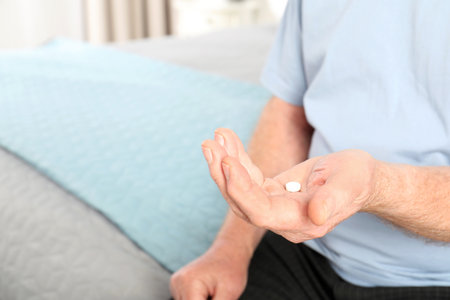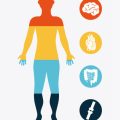Introduction to Electrolytes in Rehabilitation
Electrolytes are fundamental to the rehabilitation process, serving as vital chemical messengers that help regulate many of the body’s most important functions. In the context of recovery—whether from surgery, injury, or long-term illness—maintaining optimal electrolyte balance can make a significant difference in a person’s progress and overall well-being. These minerals, including sodium, potassium, calcium, and magnesium, work together to support nerve transmission, muscle contraction, hydration, and even cognitive function. Particularly in the UK, where climate variations and dietary habits differ from other regions, it’s important to consider how these factors might influence electrolyte needs during rehabilitation. Understanding these essentials sets the foundation for a safe and effective recovery journey tailored to each individual’s needs within a British healthcare setting.
Common Electrolyte Imbalances During Rehabilitation
Electrolyte imbalances are frequently observed among individuals undergoing rehabilitation in the UK, often complicating recovery and affecting overall well-being. Understanding these imbalances is crucial for both healthcare professionals and carers, as timely identification and intervention can make a significant difference in rehabilitation outcomes.
Frequently Encountered Electrolyte Imbalances
The most common electrolyte disturbances seen during rehabilitation include hyponatraemia (low sodium), hyperkalaemia (high potassium), hypokalaemia (low potassium), and hypocalcaemia (low calcium). Each of these can present with subtle symptoms such as fatigue, confusion, or muscle weakness—symptoms that may be mistakenly attributed to the rehabilitation process itself rather than an underlying biochemical issue.
Main Causes of Electrolyte Imbalance in Rehabilitation Clients
| Electrolyte Imbalance | Potential Causes |
|---|---|
| Hyponatraemia (Low Sodium) | Diuretic use, excessive fluid intake, heart failure, SIADH (Syndrome of Inappropriate Antidiuretic Hormone Secretion) |
| Hyperkalaemia (High Potassium) | ACE inhibitors, potassium-sparing diuretics, chronic kidney disease, dietary supplements |
| Hypokalaemia (Low Potassium) | Loop or thiazide diuretics, poor oral intake, gastrointestinal losses (vomiting/diarrhoea) |
| Hypocalcaemia (Low Calcium) | Vitamin D deficiency, chronic kidney disease, post-thyroid surgery, malnutrition |
Influence of Medications and Pre-Existing Conditions
Many clients in UK rehabilitation settings are prescribed medications such as antihypertensives or diuretics which can directly influence electrolyte levels. Additionally, pre-existing conditions including diabetes, renal impairment, and cardiac disease further increase the risk of imbalance. Dietary habits—especially among older adults who may have reduced appetite or restrictive diets—can also contribute significantly.
Recognising these risk factors early allows rehabilitation teams to tailor care plans with regular monitoring and nutritional support. This gentle vigilance ensures that each client’s journey towards recovery is not hindered by preventable complications related to electrolyte balance.

3. Assessment and Monitoring Standards
Ensuring optimal electrolyte balance during rehabilitation requires diligent assessment and ongoing monitoring. Across the UK, healthcare professionals follow robust standards set by organisations such as the National Institute for Health and Care Excellence (NICE). These guidelines provide a reliable framework to help clinicians, carers, and individuals themselves safeguard well-being throughout the recovery journey.
NICE Guidelines: A Foundation for Best Practice
NICE guidelines emphasise regular evaluation of electrolyte levels in patients at risk, particularly those undergoing intensive rehabilitation or managing complex long-term conditions. Blood tests are commonly employed to monitor sodium, potassium, calcium, and magnesium levels. NICE also recommends comprehensive review of medical history and medications, as certain treatments can influence electrolyte balance.
Monitoring in Clinical Settings
In hospitals and rehabilitation centres across the UK, multidisciplinary teams—including doctors, nurses, dietitians, and physiotherapists—collaborate to establish tailored monitoring schedules. Frequent reassessments are vital for those on intravenous fluids or with fluctuating health status. Prompt recognition of abnormal results ensures timely interventions, minimising risks associated with imbalances.
Supporting Home-Based Rehabilitation
For many recovering at home or in community settings, best practice involves clear communication between healthcare teams and family members or carers. Patients are often provided with written care plans that outline signs of imbalance to watch for—such as confusion, muscle weakness, or unusual fatigue—and when to seek professional advice. Home visits by district nurses or community health workers may include point-of-care blood testing where needed.
By adhering to these assessment and monitoring standards, both clinical staff and families contribute to safer, more effective rehabilitation outcomes. Regular review not only detects problems early but also builds confidence for everyone involved in the recovery process.
4. Tailoring Dietary Interventions for Optimal Balance
In the UK, optimising electrolyte balance during rehabilitation is best supported by personalising dietary interventions that reflect both individual health needs and cultural familiarity. The wealth of dietary resources available—from NHS guidelines to local dietitian support—allows for informed choices that cater to diverse backgrounds and preferences. Understanding UK food labelling is key; front-of-pack traffic light labels, for example, make it easier to identify foods with appropriate sodium and potassium content at a glance. By focusing on culturally familiar foods, individuals are more likely to maintain healthy habits, reducing the sense of restriction and enhancing adherence to dietary plans.
Making the Most of UK Dietary Resources
The NHS Eatwell Guide provides an accessible framework for balanced eating, including tips on incorporating sources of essential electrolytes such as potassium from fruits and vegetables, or calcium from dairy products. For those with specific medical conditions—like renal impairment or hypertension—consulting with a registered dietitian ensures that dietary recommendations are both safe and effective. Local community initiatives, such as cooking classes or support groups, offer further encouragement and practical advice tailored to regional tastes.
Culturally Familiar Foods Supporting Electrolyte Balance
| Electrolyte | UK-Friendly Food Sources | Label Guidance |
|---|---|---|
| Sodium | Bread, cheese, ready meals (monitor intake) | Avoid red-coded (high) sodium; aim for green/amber |
| Potassium | Bananas, potatoes, tomatoes, spinach | No direct label, but check ingredients list for potassium additives |
| Calcium | Milk, yoghurt, fortified plant-based drinks | Look for “source of calcium” claims on packaging |
Personalised Strategies for Everyday Life
To create an effective plan, begin by assessing your current dietary patterns using resources like food diaries or smartphone apps recommended by UK health services. Next, prioritise small changes: swapping salty snacks for fresh fruit, choosing lower-salt bread options, or integrating traditional British dishes such as shepherd’s pie with added root vegetables for extra potassium and fibre. Remember that hydration plays a crucial role in electrolyte balance; opt for water or herbal teas over sugary drinks. By embracing familiar flavours and convenient UK food products while paying attention to clear labelling systems, you can confidently support your rehabilitation journey in a way that feels both comforting and sustainable.
5. Collaborative Approaches in Multidisciplinary Teams
In the journey of optimising electrolyte balance for effective rehabilitation, collaboration among multidisciplinary teams is essential. Achieving meaningful, lasting improvements in a person’s health and independence requires more than just medical interventions; it calls for the combined expertise of GPs, dietitians, physiotherapists, and carers working in concert.
The Role of GPs
General Practitioners (GPs) often serve as the central point of contact in the UK healthcare system. They play a crucial role in identifying and monitoring potential electrolyte imbalances, prescribing appropriate treatments, and coordinating referrals to specialists when necessary. Their holistic oversight ensures that underlying conditions affecting electrolyte levels are not overlooked.
Dietitians: Personalised Nutritional Guidance
Dietitians bring specialist knowledge to the table by developing tailored meal plans that address individual nutritional needs. Their input is particularly valuable in designing diets rich in essential minerals such as potassium, sodium, and magnesium—supporting both prevention and correction of imbalances during rehabilitation. Working closely with patients and carers, they help translate clinical advice into practical daily habits.
Physiotherapists: Supporting Safe Physical Activity
Physiotherapists are instrumental in facilitating safe movement and exercise programmes, which are vital for recovery. They monitor for signs of dehydration or muscle cramps—both potential indicators of electrolyte disturbances—and adapt activity plans accordingly. By staying vigilant, they help prevent setbacks and support steady progress towards independence.
Carers: Bridging Everyday Practice
Carers, whether family members or professionals, are at the heart of day-to-day support. They ensure that recommendations from the wider healthcare team are implemented consistently—whether this means preparing balanced meals, encouraging fluid intake, or helping with prescribed exercises. Their close relationship with individuals allows them to notice subtle changes early on and communicate these observations back to the team.
A Person-Centred Approach
Effective coordination among all parties fosters a truly person-centred approach to rehabilitation. Regular communication—through team meetings, shared care records, or informal updates—ensures everyone remains informed about progress and challenges. In this way, each individual’s unique needs, preferences, and goals are respected, enhancing both clinical outcomes and overall wellbeing.
Together Towards Holistic Recovery
This collaborative ethos not only optimises electrolyte management but also nurtures trust and reassurance for individuals on their recovery path. By valuing every perspective within the multidisciplinary team, we create an environment where those receiving care feel genuinely supported—mindfully guiding them towards renewed strength and independence.
6. Practical Tips for Individuals and Carers
Maintaining an optimal electrolyte balance during rehabilitation can seem daunting, but with a few gentle, practical steps, both individuals and carers can make meaningful improvements. Here are some tailored suggestions grounded in daily UK life.
Meal Planning Made Simple
Regular, balanced meals are the foundation of good electrolyte health. Incorporate naturally rich sources of potassium, magnesium, and calcium—such as bananas, leafy greens, potatoes, dairy products, and oily fish—into weekly menus. Using familiar British staples like porridge oats, baked beans, or wholemeal bread can also help maintain steady sodium and potassium levels.
Hydration Habits
Staying hydrated is vital, but it’s equally important not to overdo it. Aim for six to eight glasses of fluid daily, including water, milk, or diluted squash. Keep a reusable bottle at hand as a gentle reminder for both individuals and carers to sip regularly throughout the day—particularly after physiotherapy sessions or outdoor activities.
Spotting Early Signs of Imbalance
Empower yourself by learning to recognise early warning signs such as muscle cramps, unusual fatigue, confusion, or swelling. Carers can gently ask about symptoms and note any changes in mood or mobility. If something feels “off,” don’t hesitate to contact your GP or community nurse for reassurance and advice.
Practical Support Tools
Consider keeping a simple food and symptom diary—a tool that enables both individuals and carers to track meals, fluids, and how one feels each day. This record can be invaluable when discussing progress with healthcare professionals.
Working Together
Above all, remember that rehabilitation is a shared journey. Encourage open conversations about preferences and concerns around meals and hydration. Gentle reminders from carers—such as offering snacks during television time or preparing a favourite cuppa—can make healthy routines feel comforting rather than clinical.
By weaving these small but meaningful habits into daily life, individuals and carers across the UK can nurture resilience and support more effective rehabilitation outcomes together.
7. Conclusion: Sustaining Electrolyte Balance for Long-Term Wellbeing
As we reflect on the ongoing journey of rehabilitation, it becomes clear that sustaining optimal electrolyte balance is not a one-off task, but a lifelong commitment—particularly here in the UK, where our climate, dietary habits, and healthcare pathways may differ from those elsewhere. Rehabilitation is often a gradual process filled with both progress and setbacks, and the foundation provided by well-managed electrolytes cannot be underestimated. Ensuring an adequate intake of key minerals such as sodium, potassium, calcium, and magnesium supports not only physical recovery but also enhances mental resilience and overall vitality.
Integrating regular monitoring—whether through routine check-ups with your GP or mindful self-awareness of symptoms—ensures that imbalances are identified early, preventing complications that could hinder recovery. Embracing local dietary options rich in these essential minerals, such as leafy greens, root vegetables, dairy products, and whole grains found in many British diets, can make this maintenance both practical and enjoyable. Moreover, staying hydrated in accordance with UK guidelines further underpins this delicate equilibrium.
Ultimately, optimising electrolyte balance should be viewed as an ongoing partnership between individuals, their families, and the dedicated health professionals who support them throughout rehabilitation. By fostering open communication and shared decision-making, everyone involved can contribute to maintaining long-term health and enhancing quality of life. In doing so, we lay the groundwork for not just recovering from illness or injury, but thriving in the months and years ahead—enabling us all to enjoy the best possible outcomes on our unique rehabilitation journeys.


